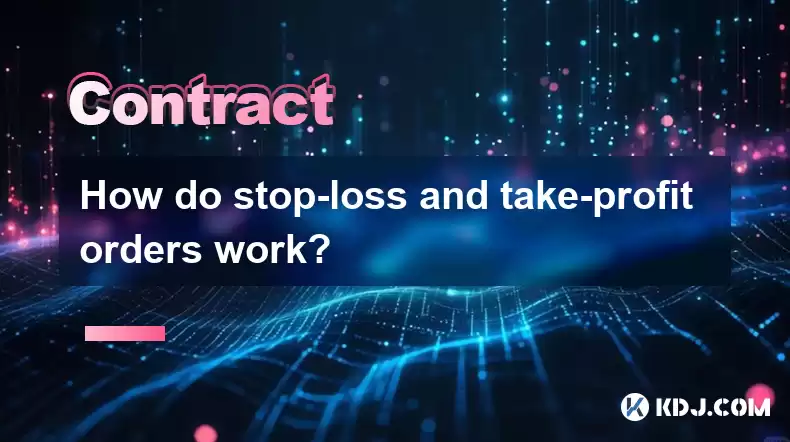-
 Bitcoin
Bitcoin $116700
0.24% -
 Ethereum
Ethereum $3973
4.34% -
 XRP
XRP $3.283
7.68% -
 Tether USDt
Tether USDt $1.000
0.01% -
 BNB
BNB $789.8
2.27% -
 Solana
Solana $176.2
3.31% -
 USDC
USDC $0.9999
0.00% -
 Dogecoin
Dogecoin $0.2238
5.14% -
 TRON
TRON $0.3389
-0.51% -
 Cardano
Cardano $0.7907
4.03% -
 Stellar
Stellar $0.4527
10.02% -
 Hyperliquid
Hyperliquid $41.07
4.27% -
 Sui
Sui $3.794
1.77% -
 Chainlink
Chainlink $19.49
10.40% -
 Bitcoin Cash
Bitcoin Cash $580.9
0.74% -
 Hedera
Hedera $0.2617
4.32% -
 Avalanche
Avalanche $23.41
3.67% -
 Ethena USDe
Ethena USDe $1.001
-0.03% -
 Litecoin
Litecoin $122.4
1.38% -
 Toncoin
Toncoin $3.364
1.49% -
 UNUS SED LEO
UNUS SED LEO $8.988
0.37% -
 Shiba Inu
Shiba Inu $0.00001295
2.82% -
 Uniswap
Uniswap $10.62
5.75% -
 Polkadot
Polkadot $3.922
4.46% -
 Dai
Dai $1.000
0.01% -
 Bitget Token
Bitget Token $4.494
2.15% -
 Monero
Monero $268.0
-1.30% -
 Cronos
Cronos $0.1523
3.68% -
 Pepe
Pepe $0.00001127
4.43% -
 Aave
Aave $285.4
4.85%
How do stop-loss and take-profit orders work?
Stop-loss and take-profit orders help crypto traders manage risk by automatically selling at set prices, limiting losses and securing profits.
Apr 08, 2025 at 03:43 pm

How do Stop-Loss and Take-Profit Orders Work?
In the volatile world of cryptocurrencies, managing risk is crucial for traders. Two essential tools that help in this regard are stop-loss and take-profit orders. These orders are designed to automatically execute trades when certain price levels are reached, helping traders to limit losses and secure profits. Understanding how these orders work can significantly enhance a trader's strategy and overall performance in the crypto market.
h3 Understanding Stop-Loss Orders
A stop-loss order is an order placed with a broker to sell a security when it reaches a certain price. The primary purpose of a stop-loss order is to limit an investor's loss on a position. In the context of cryptocurrencies, if the price of a coin drops to a predetermined level, the stop-loss order triggers a sell order to prevent further loss.
To set up a stop-loss order, follow these steps:
- Choose the asset: Select the cryptocurrency you want to trade.
- Determine the stop price: Decide at what price you want the stop-loss to trigger. This should be a price level where you believe the asset's value is likely to continue falling.
- Place the order: Use your trading platform to set the stop-loss order at the chosen price. Most platforms allow you to input the stop price directly.
For example, if you bought Bitcoin at $50,000 and set a stop-loss at $45,000, the order would automatically sell your Bitcoin if the price drops to $45,000, limiting your loss to $5,000 per Bitcoin.
h3 Understanding Take-Profit Orders
A take-profit order is the opposite of a stop-loss order. It is designed to lock in profits by automatically selling a security when it reaches a certain price level. In the crypto market, a take-profit order helps traders to secure gains without constantly monitoring the market.
To set up a take-profit order, follow these steps:
- Choose the asset: Select the cryptocurrency you want to trade.
- Determine the target price: Decide at what price you want to sell the asset to realize your profit. This should be a price level where you believe the asset's value is likely to peak or stabilize.
- Place the order: Use your trading platform to set the take-profit order at the chosen price. Most platforms allow you to input the target price directly.
For instance, if you bought Ethereum at $3,000 and set a take-profit at $3,500, the order would automatically sell your Ethereum if the price reaches $3,500, securing a profit of $500 per Ethereum.
h3 Types of Stop-Loss and Take-Profit Orders
There are different types of stop-loss and take-profit orders that traders can use, depending on their strategy and market conditions. The most common types include:
- Standard Stop-Loss and Take-Profit Orders: These are the basic types where the order is triggered at the exact price specified.
- Trailing Stop-Loss Orders: These orders adjust the stop price at a fixed percentage or dollar amount below the market price as it rises. This allows traders to secure profits while giving the asset room to grow.
- Guaranteed Stop-Loss Orders: These orders ensure that the trade is executed at the specified price, regardless of market gaps or slippage. However, they often come with a fee.
Understanding the nuances of these order types can help traders tailor their strategies to different market scenarios.
h3 Benefits of Using Stop-Loss and Take-Profit Orders
Using stop-loss and take-profit orders offers several benefits to cryptocurrency traders:
- Risk Management: These orders help manage risk by automatically executing trades at predetermined levels, reducing the potential for significant losses.
- Emotional Discipline: By setting these orders, traders can avoid making impulsive decisions based on emotions, which is crucial in the highly volatile crypto market.
- Time Efficiency: Traders do not need to constantly monitor the market, as these orders work automatically once set.
These benefits make stop-loss and take-profit orders indispensable tools for both novice and experienced traders in the cryptocurrency space.
h3 Potential Drawbacks and Considerations
While stop-loss and take-profit orders are valuable tools, they are not without potential drawbacks. Traders should be aware of the following considerations:
- Slippage: In highly volatile markets, the actual execution price may differ from the specified stop or target price, leading to slippage.
- False Breakouts: Prices may briefly hit the stop-loss or take-profit levels due to market noise, triggering the order prematurely.
- Market Gaps: In the case of significant news events, prices may gap past the stop-loss level, resulting in larger-than-expected losses.
Understanding these potential issues can help traders set more effective stop-loss and take-profit orders and manage their expectations accordingly.
h3 Practical Example of Using Stop-Loss and Take-Profit Orders
To illustrate how stop-loss and take-profit orders work in practice, consider the following scenario:
- Scenario: You buy 1 Bitcoin at $40,000.
- Stop-Loss: You set a stop-loss at $38,000 to limit your potential loss to $2,000 per Bitcoin.
- Take-Profit: You set a take-profit at $45,000 to secure a profit of $5,000 per Bitcoin.
If the price of Bitcoin drops to $38,000, your stop-loss order would trigger, selling your Bitcoin and limiting your loss. Conversely, if the price rises to $45,000, your take-profit order would execute, securing your profit.
This example demonstrates how these orders can be used to manage risk and secure profits in the cryptocurrency market.
Frequently Asked Questions
Q1: Can I adjust my stop-loss and take-profit orders after they are set?
Yes, most trading platforms allow you to adjust your stop-loss and take-profit orders at any time before they are triggered. This flexibility enables you to adapt your strategy to changing market conditions.
Q2: Are stop-loss and take-profit orders guaranteed to execute at the specified price?
No, stop-loss and take-profit orders are not always guaranteed to execute at the specified price, especially in highly volatile markets. Slippage and market gaps can result in execution at a different price.
Q3: How do I choose the right stop-loss and take-profit levels?
Choosing the right levels depends on your risk tolerance, trading strategy, and market analysis. A common approach is to set stop-loss levels based on technical indicators or support levels, while take-profit levels can be set at resistance levels or based on your profit targets.
Q4: Can I use stop-loss and take-profit orders for all cryptocurrencies?
Yes, you can use stop-loss and take-profit orders for most cryptocurrencies available on trading platforms. However, the availability of these orders may vary depending on the specific platform and the liquidity of the cryptocurrency.
Disclaimer:info@kdj.com
The information provided is not trading advice. kdj.com does not assume any responsibility for any investments made based on the information provided in this article. Cryptocurrencies are highly volatile and it is highly recommended that you invest with caution after thorough research!
If you believe that the content used on this website infringes your copyright, please contact us immediately (info@kdj.com) and we will delete it promptly.
- Roman Storm, Funding Effort, and the Looming Defense Retrial: A New York Minute on the Tornado Cash Case
- 2025-08-09 02:50:14
- Crypto's Wild Ride: XRP, Dogecoin, and the Altcoin Surge You Can't Ignore
- 2025-08-09 02:50:14
- Elon Musk, Bitcoin, and the Enduring Power of Approval: A Crypto Love Story?
- 2025-08-09 03:50:15
- Ruvi AI: The Next Big Thing After Ripple on CoinMarketCap?
- 2025-08-09 03:50:15
- Floki Price Surges: Elliott Wave and Fibonacci Setups Point to Potential Gains!
- 2025-08-09 02:30:16
- Pepe Price, RTX (Remittix?) & the $10K ETH Dream: NYC Crypto Chatter
- 2025-08-09 02:30:16
Related knowledge

What is the difference between realized and unrealized PNL on KuCoin?
Aug 09,2025 at 01:49am
Understanding Realized and Unrealized PNL on KuCoinWhen trading on KuCoin, especially in futures and perpetual contracts, understanding the distinctio...

How does KuCoin Futures compare against Binance Futures in terms of features?
Aug 09,2025 at 03:22am
Trading Interface and User ExperienceThe trading interface is a critical component when comparing KuCoin Futures and Binance Futures, as it directly i...

What is the distinction between mark price and last price on KuCoin?
Aug 08,2025 at 01:58pm
Understanding the Basics of Price in Cryptocurrency TradingIn cryptocurrency exchanges like KuCoin, two key price indicators frequently appear on trad...

What are the specific maker and taker fees on KuCoin Futures?
Aug 08,2025 at 08:28am
Understanding Maker and Taker Fees on KuCoin FuturesWhen trading on KuCoin Futures, users encounter two primary types of fees: maker fees and taker fe...

Can you explain the difference between cross margin and isolated margin on KuCoin?
Aug 09,2025 at 02:57am
Understanding Margin Trading on KuCoinMargin trading on KuCoin allows traders to borrow funds to increase their trading position beyond their actual c...

How can I open a long position on KuCoin Futures?
Aug 09,2025 at 02:07am
Understanding KuCoin Futures and Long PositionsOpening a long position on KuCoin Futures means you are speculating that the price of a cryptocurrency ...

What is the difference between realized and unrealized PNL on KuCoin?
Aug 09,2025 at 01:49am
Understanding Realized and Unrealized PNL on KuCoinWhen trading on KuCoin, especially in futures and perpetual contracts, understanding the distinctio...

How does KuCoin Futures compare against Binance Futures in terms of features?
Aug 09,2025 at 03:22am
Trading Interface and User ExperienceThe trading interface is a critical component when comparing KuCoin Futures and Binance Futures, as it directly i...

What is the distinction between mark price and last price on KuCoin?
Aug 08,2025 at 01:58pm
Understanding the Basics of Price in Cryptocurrency TradingIn cryptocurrency exchanges like KuCoin, two key price indicators frequently appear on trad...

What are the specific maker and taker fees on KuCoin Futures?
Aug 08,2025 at 08:28am
Understanding Maker and Taker Fees on KuCoin FuturesWhen trading on KuCoin Futures, users encounter two primary types of fees: maker fees and taker fe...

Can you explain the difference between cross margin and isolated margin on KuCoin?
Aug 09,2025 at 02:57am
Understanding Margin Trading on KuCoinMargin trading on KuCoin allows traders to borrow funds to increase their trading position beyond their actual c...

How can I open a long position on KuCoin Futures?
Aug 09,2025 at 02:07am
Understanding KuCoin Futures and Long PositionsOpening a long position on KuCoin Futures means you are speculating that the price of a cryptocurrency ...
See all articles

























































































